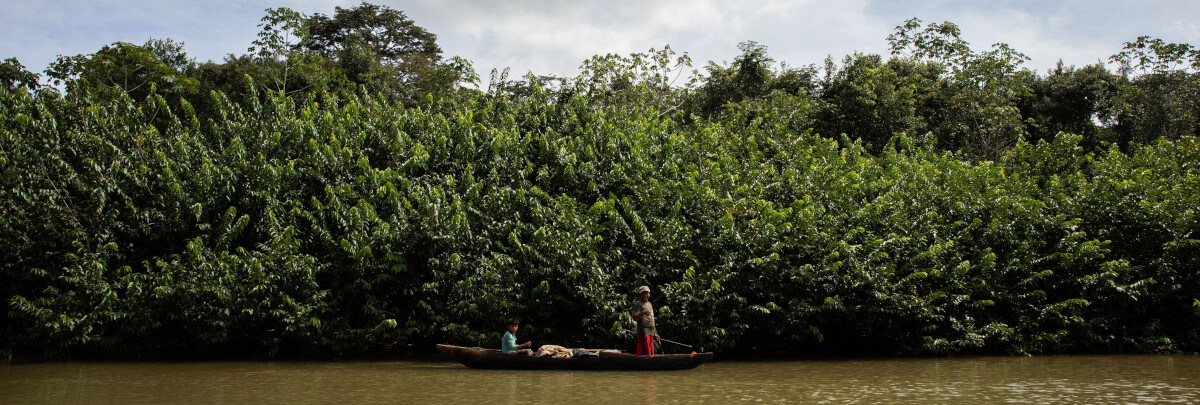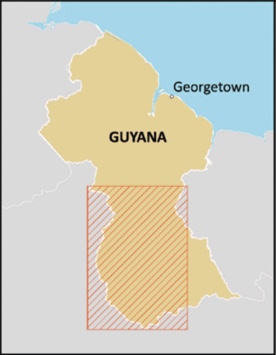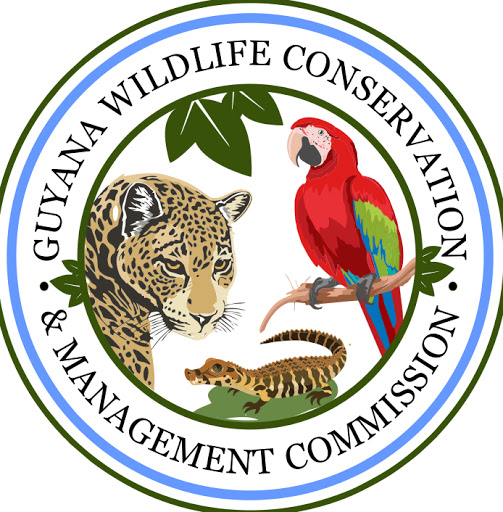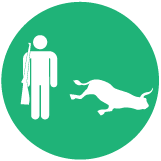Legal hub/Guyana
LEGAL HUB/GUYANA

BACKGROUND
Country legal hubs are a user-friendly point of access to a comprehensive set of data and analysis on the statutory legal frameworks relating to sustainable wildlife management. This includes environmental protection, tenure rights, land use planning, the consumption (hunting and fishing) and non-consumption (ecotourism) use of wildlife, as well as animal production, animal health, and food safety and security.
Each legal hub provides:
- historical and political background on the country;
- access to relevant national normative texts by sector;
- legal assessment of sectoral legislation;
- overview of site specific customary norms and practices;
- overview of the domestication of international instruments;
- description of relevant national institutions and their roles.

LEGAL AND POLITICAL CONTEXT

Political system: Semi presidential parliamentary Republic
Administrative and territorial organization: The country is divided into 10 regions, each governed by Regional Democratic Councils (RDCs). The Regions are divided into Neighborhood Democratic Councils (NDCs)
Legal system: Common law with some influences from the Dutch legal system inherited from colonial times, particularly strong on land tenure issues
International Conventions: The country has a dualist system, requiring the enactment of domestic legislation to incorporate international treaties
The Dutch were the first Europeans to colonize Guyana at the beginning of the seventeenth century. The Netherlands had three colonies in Guyana: Essequibo, Demerara and Berbice that were governed by the West India Company (WIC). At the beginning of the nineteenth century, the colonies were annexed by the British and merged to form British Guiana in 1831. Guyana became independent from the British in 1966 and was proclaimed a cooperative republic within the Commonwealth in 1970 with a President elected by the National Assembly.
The Head of State is the President who appoints and supervises the Prime Minister and other ministers of the Cabinet. The country is divided into 10 regions governed by Regional Democratic Councils which are the supreme government organs in each region. These councils have the responsibility to manage and administer the Region and coordinate activities of all Local Democratic Organs within its boundaries. Within regions, three types of local government organs are established: Municipal Councils, Neighborhood Democratic Councils, and Amerindian Village Councils. Guyana has 6 municipalities, and 65 Neighborhood Democratic Councils. These operate under the Ministry of Local Government and Regional Development and are governed by the Municipal and District Councils Act of 1988 and the Local Democratic Organs Act of 1998. There are 117 Amerindian Village Councils which are governed by the Amerindian Act of 2006 and managed by the Ministry of Amerindian Affairs. Village Councils administer Village lands under a communal land title, and the resources thereof.
The Executive power is exercised by the President who is elected by direct universal suffrage and acts as Head of the State. The President is indirectly elected; each party presents a list of candidates for the assembly with a designated leader that will become the President if such party receives the largest number of votes. Legislative power is vested in the Parliament which consists of the President and the National Assembly. The Constitution provides for a unicameral legislature with 25 members directly elected from the ten geographic constituencies and 40 elected from a national list. The President has the authority to dissolve the assembly and call new elections, but no later than 5 years after the inauguration day. The President may dissolve the assembly and call new elections at any time, but no later than 5 years from its first sitting. The judiciary consists of a magistrate's court for each of the ten regions and a Supreme Court comprising a High Court and a Court of Appeal. The final court of appeal is the Caribbean Court of Justice in Port of Spain, Trinidad and Tobago.
Guyana’s legal system is based on British common law with some influences from the Dutch legal system inherited from colonial times. The influence from the civil law system is particularly strong on land tenure issues. Currently, several Acts enacted in colonial times are still in force with subsequent amendments. The Constitution of Guyana was issued in 1980 and it is the supreme law of the country.
Regarding international law, the country has a dualist system, requiring the enactment of domestic legislation to incorporate international treaties. In the dualist system, ratified treaties are not automatically incorporated into the domestic law.
LEGAL FRAMEWORK
This section provides access to a list of statutory instruments specific to each sector that can be consulted and downloaded.
DIAGNOSTIC OF STATUTORY LAW
Detailed legal diagnostics are available on national statutory instruments regulating the following topics
DIAGNOSTIC OF CUSTOMARY LAW
Detailed diagnostics are available on customary norms and practices operating at the SWM Programme site of South Rupununi, regulating the following topics:
DOMESTICATION OF RATIFIED INTERNATIONAL INSTRUMENTS
INSTITUTIONAL SET‐UP
Institutions |
Roles |
|---|---|
|
Ministry of Amerindians Affairs (MoAA)
|
|
|
Ministry of Natural Resources (MNR)
|
|
|
Guyana Geology and Mines Commission (GGMC)
|
|
|
Guyana Wildlife Conservation and Management Commission (GWCMC)
|
|
|
Guyana Wildlife Scientific Committee
|
|
|
Guyana Forestry Commission (GFC)
|
|
|
Guyana Land & Surveys Commission (GLSC)
|
|
|
Central Housing and Planning Authority (CHPA)
|
|
|
Environmental Protection Agency (EPA)
|
|
|
Fisheries Department- Ministry of Agriculture
|
|
|
Guyana Livestock Development Authority (GLDA)
|
|
|
Veterinary Public Health Unit- Ministry of Health
|
|
|
Veterinary Board
|
|










